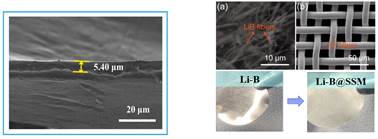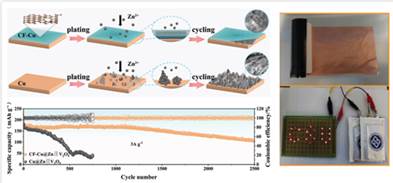1. Team Introduction
The special battery research team aims to meet the major national and defense needs in the field of batteries, focusing on new energy storage and conducting research on military lithium batteries and water-based zinc batteries. There are a total of 5 teachers, including 2 professors and 3 associate professors. Among them, there is 1 leading talent in the national "Ten Thousand Talents Plan" and 3 "Outstanding Youth" in Hunan Province. At present, it has undertaken more than 20 important scientific research projects such as National Natural Science Foundation of China key projects, military key projects, and national key research and development plan projects. The research results have been published in more than 300 high-level academic journals such as Advanced Materials and Nature Communications. Graduates have gone to well-known enterprises such as BYD and renowned universities such as Peking University for further studies. The transformation of achievements has incubated high-tech enterprises such as Foshan Lithium Peng.
2. Research Members

|
Libao Chen, Distinguished professor, director of the Institute of Functional Materials at the Powder Metallurgy Research Institute of Central South University. Research direction: lithium alloy, wide temperature lithium-ion battery, solid state lithium battery. |

|
Lin Mei, Professor, research direction: wide temperature lithium-ion battery |

|
Yuejiao Chen, Associate professor, Research direction: Zinc battery, lithium metal battery. |

|
Guichao Kuang, Associate professor, Research direction: lithium metal battery, solid state battery, high temperature lithium-ion battery |

|
Zhibin Wu, Associate professor, Research direction: lithium metal battery, battery characterization |
3. Main research directions of the team
(1) Research on wide temperature range special lithium-ion batteries
Due to the fact that the maximum operating temperature of conventional lithium-ion batteries is maintained within the range of -20 ℃ to 60 ℃, traditional organic electrolytes pose safety hazards such as flammability, making it difficult to meet the requirements of extreme conditions. Develop special lithium-ion batteries that can simultaneously balance high power, flame retardancy, and wide temperature range (-50 ℃~80 ℃). Member of the Electrochemical Society of America (ECS), Director of the Institute of Functional Materials at the Powder Metallurgy Research Institute of Central South University
.
(2) Research on Lithium Metal Batteries
Lithium metal negative electrodes have excellent prospects due to their extremely high theoretical specific capacity, but there are still a series of problems such as lithium dendrites, volume expansion, and cycling stability. In practical applications, commercial cathodes are usually matched with lithium anodes with an area capacity of 3-10 mAh cm-2, which means that the thickness of lithium metal only needs to be controlled within 50 μ m. Due to the low melting point of lithium, it has strong diffusion creep even at room temperature, resulting in viscosity and poor processability, which hinders the large-scale production of thin lithium strips. Developing high safety, ultra-thin lithium metal negative electrodes to suppress dendrite and volume expansion and improve battery cycling stability is of great significance.

(3) Research on Water based Zinc Ion Batteries
To address the issues of zinc dendrites and side reactions, a stable functional protective interface layer can be controllably constructed on zinc metal, revealing the negative electrode interface regulation mechanism and achieving efficient and stable development of "zinc friendly hydrophobic" zinc negative electrodes.

4. Representative Publications:
(1) Piao Qing, Zhibin Wu, Libao Chen, et al. Interpenetrating LiB/Li3BN2 phases enabling stable composite lithium metal anode. Science Bulletin, 2024, 69 , 2842-2852
(2) Zhibin Wu, Libao Chen, et al. Structural Distortion in the Wadsley-Roth Niobium Molybdenum Oxide Phase Triggering Extraordinarily Stable Battery Performance, Angewand Chemie-International Edition. 2024, 63, 202317941
(3) Kecheng Long, Libao Chen, et al. Green mechanochemical Li foil surface reconstruction toward long-life Li-metal pouch cells, Energy&Environmental Science, 2024, 17, 260.
(4) Zhongming Wang, Lin Mei, Libao Chen, et al. A nitrile solvent structure induced stable solid electrolyte interphase for wide-temperature lithium-ion batteries, Chemical Science, 2024, 15, 13768.
(5) Shaozhen Huang, Zhibin Wu, Libao Chen, et al. Interfacial friction enabling ≤ 20 μm thin free-standing lithium strips for lithium metal batteries, Nature Commununication,2023, 14, 5678.
(6) Piao Qing, Zhibin Wu, Libao Chen, et al. Highly Reversible Lithium Metal Anode?? Enabled by 3D Lithiophilic-Lithiophobic Dual-Skeletons, Advanced Materials, 2023, 35, 202211203
(7) Tuoya Naren, Gui-Chao Kuang, Libao Chen, et al. Reactive Polymer as Artificial Solid Electrolyte Interface for Stable Lithium Metal Batteries, Angewand Chemie-International Edition. 2023, 62, 202305287
(8) Huaming Yu, Yuejiao Chen, Libao Chen, et al. Reversible adsorption with oriented arrangement of a zwitterionic additive stabilizes electrodes for ultralong-life Zn-ion batteries, Energy&Environmental Science, 2023, 16, 2684.
(9) Jixu Yang, Lin Mei, Libao Chen, et al. Synergetic modulation on solvation structure and electrode interface to achieve lithium-ion batteries cycled at ultra-low temperature, Chemical Engineering Journal, 2023, 14, 5678.
(10) Hao Yang, Libao Chen, et al. Deep understanding of lithium deposition mechanisms in lithium metal anode porous hosts by combining phase-field simulations with experimental verification, Acta Materialia, 2023, 119231.
(11) Tuoya Naren, Gui-Chao Kuang, Libao Chen, et al. Stabilizing Lithium Metal Batteries by Synergistic Effect of High Ionic Transfer Separator and Lithium-Boron Composite Material Anode, ACS Nano, 2023, 17, 20315.
(12) Meng Fu, Yuejiao Chen, Libao Chen, et al. Building Sustainable Saturated Fatty Acid-Zinc Interfacial Layer toward Ultra-Stable Zinc Metal Anodes, Nano Letters, 2023, 23, 3573.

